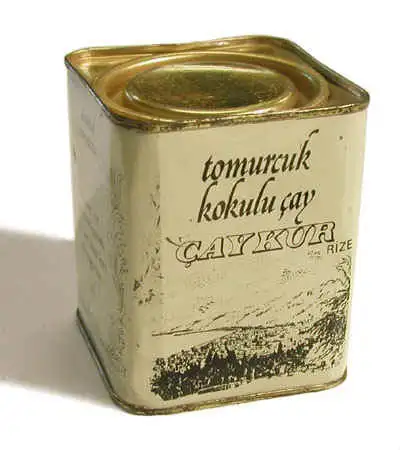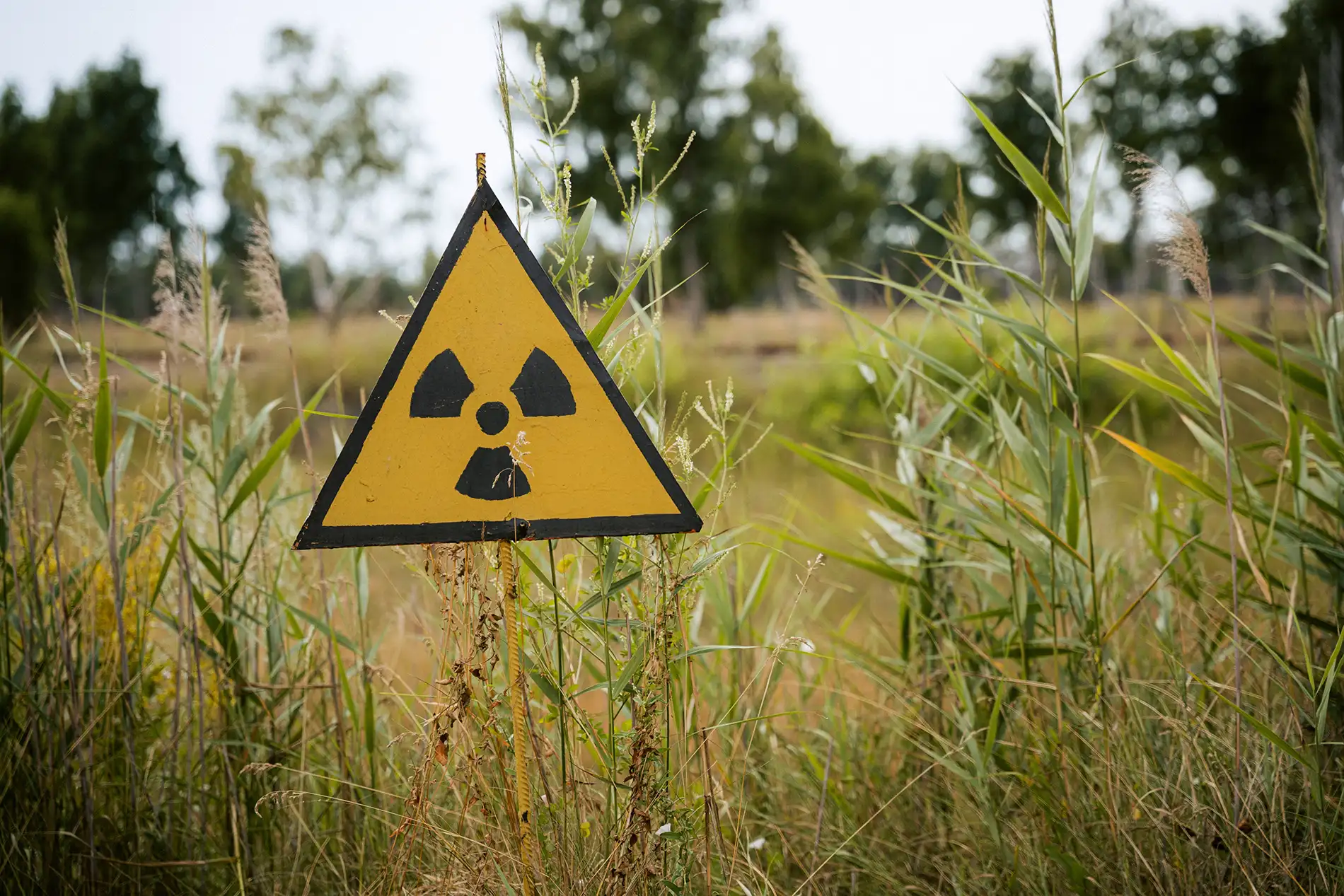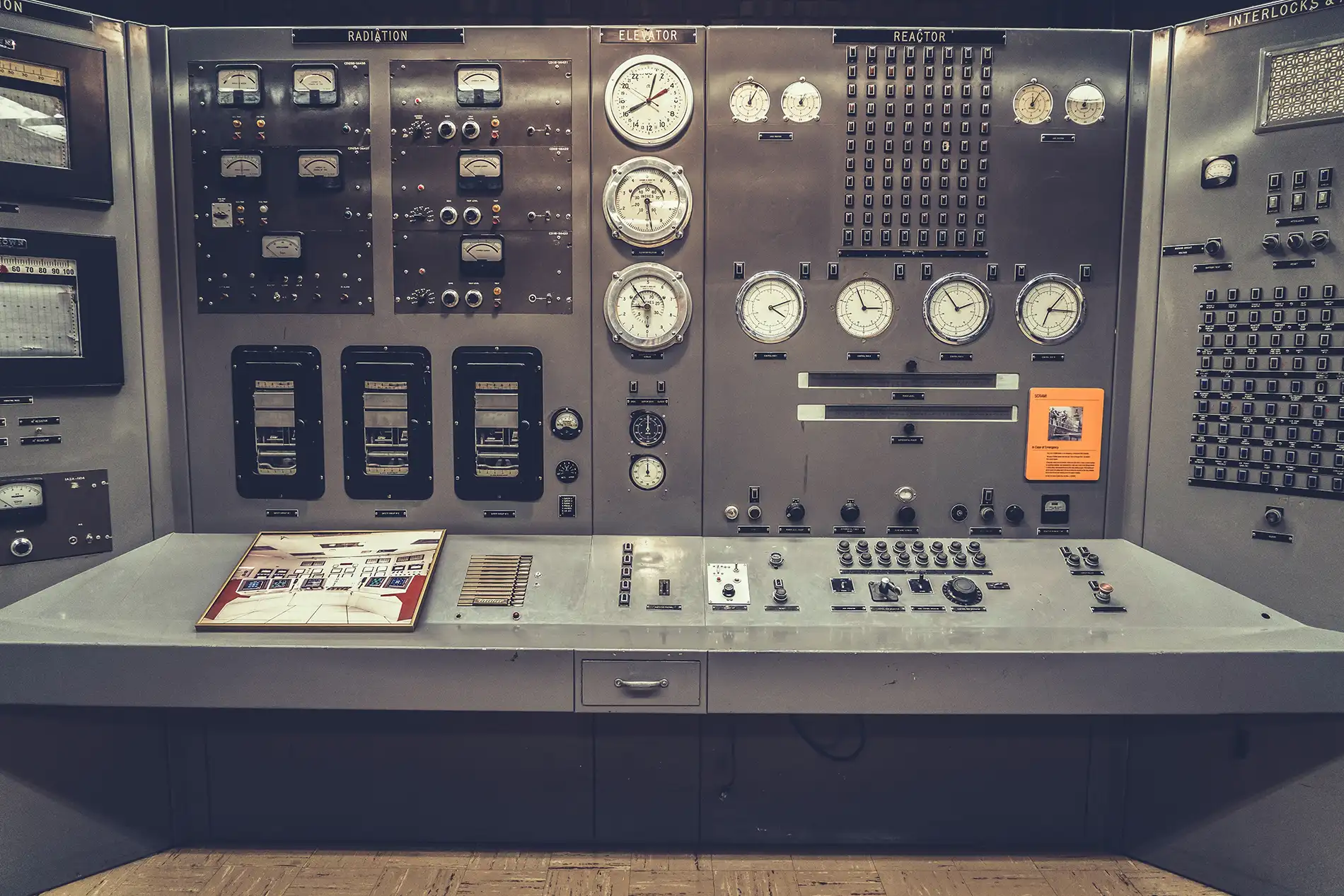Inside ORAU’s Museum of Radiation and Radioactivity, you will find several collection items that are considered accidents and incidents. Many of these items were added to the collection because they contained some amounts of radioactivity caused by destructive events, one of those being the incident at Chernobyl.
For those who aren’t familiar with the story, the Chernobyl disaster began on April 26, 1986, with the explosion of the No. 4 reactor of the Chernobyl Nuclear Power Plant. Plant workers shut down the reactor’s power-regulating system and its emergency safety systems, and they removed control rods from its core while allowing the reactor to run at 7 percent power. These mistakes, compounded by others, led to an uncontrolled chain reaction that resulted in several massive explosions. The initial explosion and subsequent fire ejected radioactivity high into the atmosphere which was subsequently spread by the wind. The radioactive cloud spread over the countries of Ukraine, Belarus and the Russian Federation. Several items from Chernobyl were contaminated by fallout, including the can of Turkish tea that can now be found at the museum in Oak Ridge. Let’s look at four things to know about this amazing addition to the collection:

1. Tea container donated by Rowena Argall
For many years, retired ORAU health physicist and former director of ORAU’s Professional Training Programs Paul Frame, Ph.D. was on the Health Physics Society History Committee, and at one point was the chair of the committee. For a period, Rowena Argall was on the history committee alongside Frame. During this time, a common topic at the meetings was the collection that Frame had begun with all sorts of items connected to radiation and radioactivity. As it turns out, Argall had family that was from an area of Turkey that was affected by fallout from Chernobyl. During one of her trips to the area following the explosions, she picked up some tea and brought it back to see if it contained any type of contamination. Turned out it did.
2. Most detected radionuclides were Cs-137 and naturally occurring K-40
Upon getting the item, Frame and his colleagues did some testing on the tea container, and it became clear that it had fallout in it. While not in-depth analysis, the team checked for the “easy stuff,” but that was enough to show that the tea had in fact some contamination. The most detected radionuclides that were found inside the container were Cs-137 and naturally occurring K-40. So, how does a container of Turkish tea become infected after an incident like Chernobyl? Let’s dig in a little deeper.

3. Likely contamination resulted from the tea leaves
While you may be wondering how a sealed container of tea becomes contaminated by radiation, the chances are that the process began much earlier. While there is no scientific proof, the most reasonable explanation is that the tea leaves that were used to make the tea were what was contaminated. The tea leaves were exposed to and absorbed the fallout while they were growing, and they were deposited into the tea making process. There were other crops that were affected from the fallout as well, including the grapes of some French wine.
4. Turkey received relatively low levels of fallout overall
While there was enough fallout in northeast Turkey to cause some damage and contamination, the country as a whole received considerably less exposure to fallout compared to surrounding countries. Following the accident at Chernobyl on April 26, by the end of April and beginning of May, the winds had shifted and were blowing south in the direction of Turkey. This is why an accident that happened in the Soviet Union still influenced Turkey and its neighbors.
Would you like to learn more about some of the items at ORAU’s Museum of Radiation and Radioactivity? Take a virtual tour of the museum and see all the fascinating items that are in the collection!
